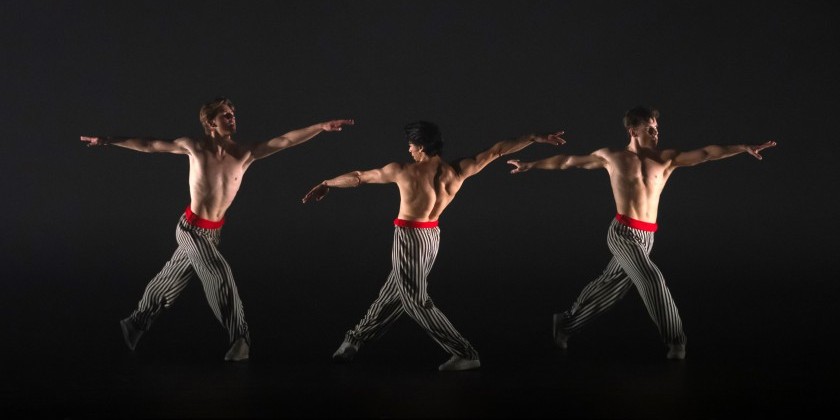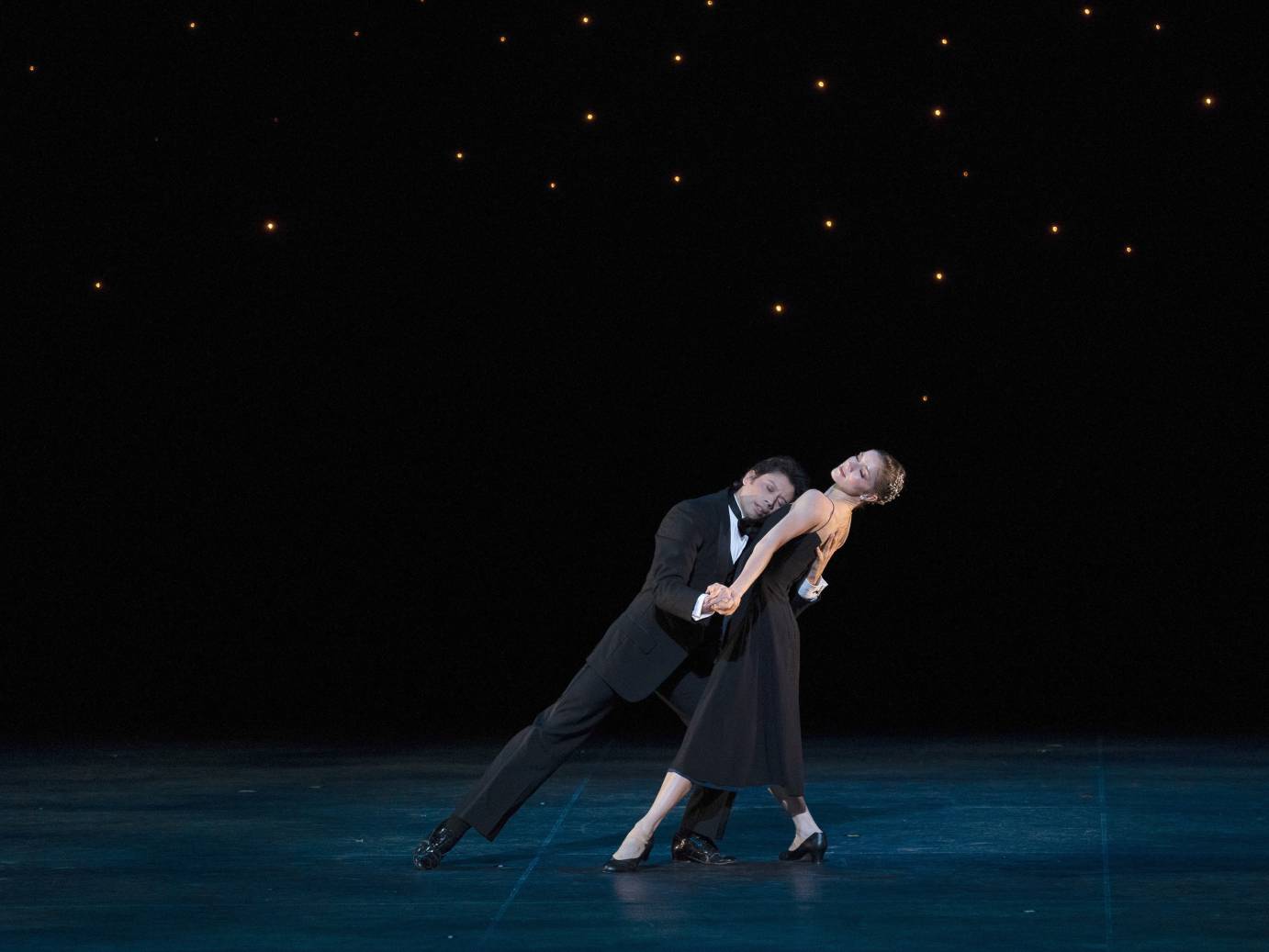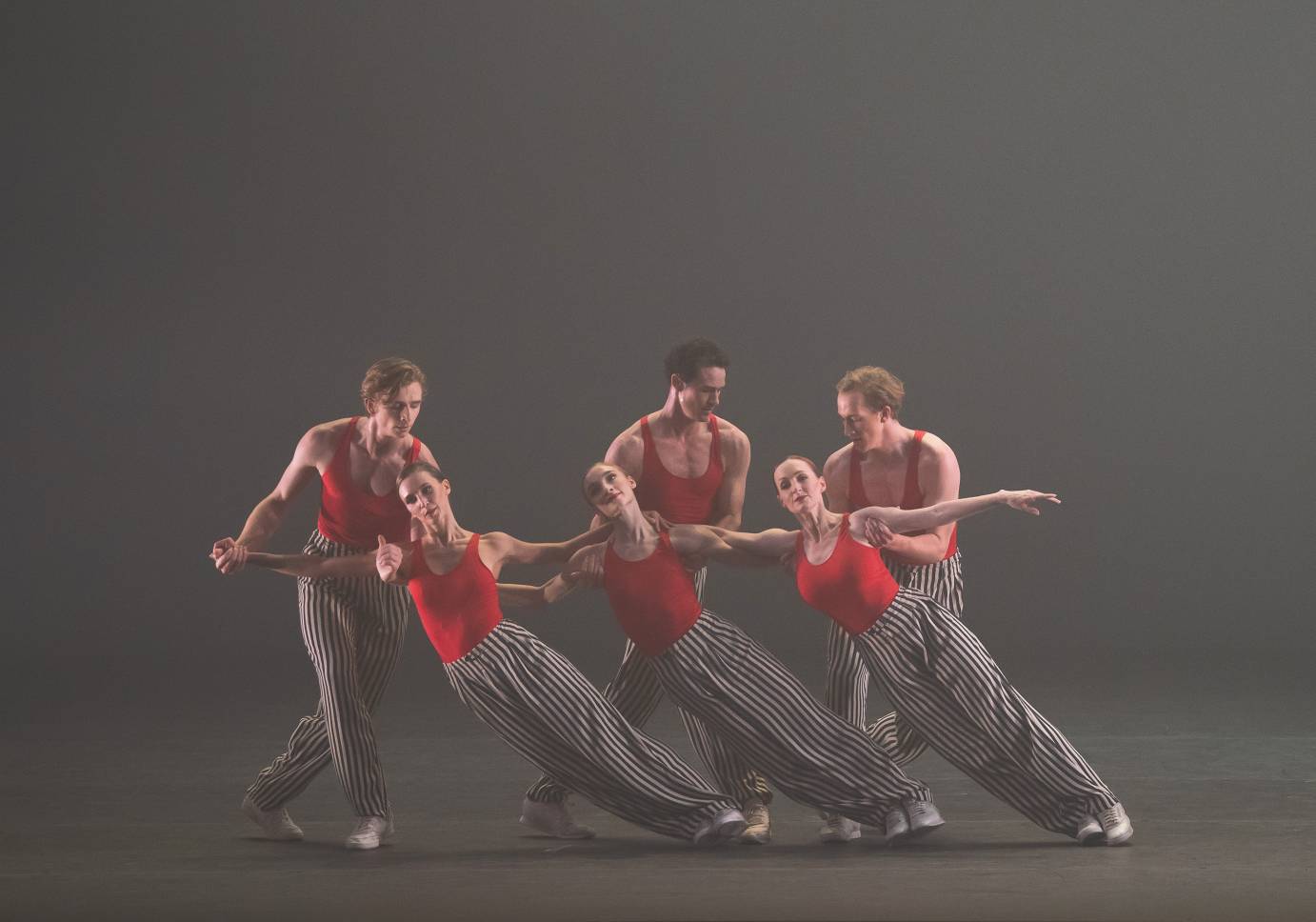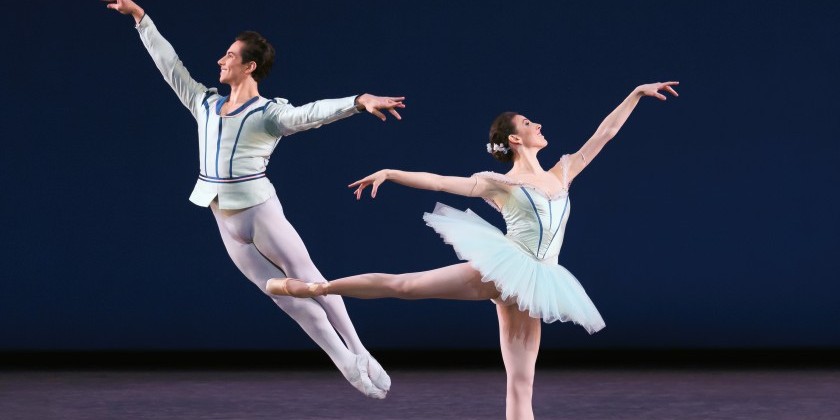IMPRESSIONS: American Ballet Theatre Presents "Signature Works"

Makarova, Balanchine, and Tharp. Oh My!
AMERICAN BALLET THEATRE SIGNATURE WORKS
David Koch Theater, Lincoln Center, New York City
Saturday, October 26, 2024 at 7:30pm
Sunday, October 27, 2024 at 5:30pm
The Kingdom of the Shades
Choreography: NATALIA MAKAROVA, after MARIUS PETIPA
Sylvia Pas de Deux
Choreography: GEORGE BALANCHINE
Sinatra Suite
Choreography: TWYLA THARP
In the Upper Room
Choreography: TWYLA THARP
Staged by SHELLEY WASHINGTON with BLAINE HOVEN
Fifty years ago, Natalia Makarova choreographed and staged her adaptation of Marius Petipa's The Kingdom of the Shades (from La Bayadère) for American Ballet Theatre in the venue then called the New York State Theater. Artistic Director Susan Jaffe does well to bring this fine showpiece back into the company’s repertoire for its Signature Works program on October 26-27, 2024.
Twenty-four female dancers (on a truly grand stage there can be 32) descend a ramp, one by one, repeating a short step pattern with an arabesque held in unison so many times that audience members must surely think they are on hallucinogens. (The ballet's warrior hero, Solor, multiplies the image in an opium-induced dream.)
This vision is one of the most mesmerizing displays of precision and harmony of any ballet blanc in the canon. After the long descent of this snaking tutu train from the Himalayan mountains to India, the corps dancers form ranks on stage and start to extend their legs in seemingly unending apparitions of exactitude. The audience bursts into applause.

But in the hierarchical world of imperialist Russia, and therefore in all cultures depicted by its ballet master, Marius Petipa, not all Shades are alike. Three special Shades appear, before Solor leaps onto the stage and sees his deceased beloved, Nikiya, high above in a tiny dell among trees. He bows to her, and his devotion electrifies the auditorium.
Before he gets to show what he is made of, the first of the special Shades performs a sprightly solo. It is indeed special. Yoon Jung Seo, unruffled by the technical challenges in her variation, attacks a series of triple turns with assurance. She extends her leg coming out of each multiple pirouette with such ease that many audience members cannot contain their applause. Each position is clear; every jump possesses ballon; and a sequence of hops in arabesque bounces giddily with such esprit that I simply have to join the chorus of appreciation. It’s a star turn for Yoon Jung Seo.
It takes a seasoned and true artist to build from here, but this is no challenge for the wonder that is Isaac Hernández. The 34-year-old Mexican danseur noble has joined ABT after successful tenures at English National Ballet and San Francisco Ballet. Hernández cabrioles into one’s heart with accuracy and lightness, and does not seem to force a single passage. Instead, he delays an extension in mid-air seemingly after the musical cue. This gives the impression he is hovering in the air, and a playful conversation with the music ensues. He does not try to charm the audience, but stays in character. One’s focus follows him naturally, since he does not sell his art as circus tricks. However, there is an almost imperceptible flaw in his line. If I could ask Santa Claus for a Christmas present, I’d ask him to convince Hernández to wing his foot ever so slightly in any backward extension. It would alleviate any hint of a droop.
The second and third Shade variations, danced by Sierra Armstrong (with a sequence of high développés à la seconde which magically ‘develop’ rather than just being held high) and Sunmi Park (with her meticulous and spirited cabrioles reflecting Hernandez’s) set the stage for the union of the principal couple. In this dream world, a fabric veil connects Solor and Nikiya in the afterlife. (She has been bitten by a poisonous snake placed by her rival, Gamzatti). Hee Seo’s quiet grace illuminates the stage, but she fails to respond to Hernández’s ardor. He proves to be an excellent partner, and makes her appear to linger in any lift. The quick ascent, the supported ballon, and the stalled descent confirm his mastery of the adagio. I wish for more suppleness in her upper body.
In the end, the lovers cross the stage through clouds and eventually reach the elevated glade. The Royal Ballet's Reece Clark was supposed to partner ABT’s own Christine Shevchenko on Saturday night, but due to illness or injury, the audience gets treated to its new Mexican superstar on both evenings. The orchestra under the baton of David LaMarche sounds full and satisfying. An especially slow tempo on Saturday is thankfully adjusted by Sunday which leaves me to cheer dancers and musicians alike.

George Balanchine’s pointlessly meandering Sylvia Pas de Deux from 1950 gets different treatments by artists at the opposite end of the career spectrum, both managing to elevate the material. If I had not read the program, 45-year-old ballerina Gillian Murphy would have me convinced that she was dancing a work by Frederick Ashton (who choreographed the full-length Sylvia in American Ballet Theatre’s repertoire). Murphy’s upper body blossoms in lithesome grace; and she combines sophisticated delicacy with a generous softness. Nothing ever appears in any way forced, as Delibes’ music — conducted by Charles Barker — seems to emanate from her body. She has never looked better.
On Sunday, the newest and youngest principal dancer, Chloe Misseldine, brings an effortless clarity to the role that I equally appreciate. Her extensions pierce the space and one can trace an architectural line. She plays with the orchestra — led by Ormsby Wilkins — when she takes a confident extra breath in a balance. What a treat to see both ballerinas share their joy and artistry in such distinct ways. But let me not forget to praise their partners. Aran Bell deserves applause for confidently supporting Misseldine, yet gallantly not imposing himself on her or the audience. He dances his variation with aplomb.

Daniel Camargo brings sex appeal to the role, and Murphy responds. While these two dance the adult version there is no need to worry: the pas de deux is still G-rated. Yet it’s nice to sense a hint of romantic interest. Camargo makes Murphy descend from any lift as if she magically floats. In the virtuoso solo, he brushes his legs in soaring cabrioles with a fluffy tenderness, as if he is thinking only about her. A series of double tours to second position strikes me as the only part of his solo that looks labored. Apparently, New York City Ballet will bring this seldom-seen pas de deux back into its repertoire when it hosts an upcoming tribute to Maria Tallchief, Balanchine’s then-wife and originator of the ballerina role.

Twyla Tharp's duet Sinatra Suite emerged in 1983 as a reworked excerpt from her group work Nine Sinatra Songs, that had premiered the previous year. A star vehicle for Mikhail Baryshnikov, who manhandled Elaine Kudo, the work now looks less misogynist and more like a lovers’ quarrel in “That’s Life,” the third song in the suite. It’s a fall from the blissful exaltation of the preceding “Strangers in the Night” and the poetic commitment of “All the Way,” but “That’s Life” provides an emotional roller coaster that both casts ride with relish.
Cassandra Trenary's and Herman Cornejo's flawless partnering has me in disbelief. Trenary snakes all around his body, and ends up suspended aloft or safely caressed in a splayed position an inch off the floor. Cornejo’s masterful partnering skills don’t let one in on how he maneuvers her around; and the spectator is continually amazed by the brilliant directional changes that Tharp pulls out of her choreographic hat. While Cornejo puts on a jacket, Trenary flies across the stage and — after what seems like several seconds in the air — lands securely in his arms. These two time every step to perfection.

Sunmi Park and Daniel Camargo’s relationship is a bit rougher around the edges from the start. The initial emotional joyride leads to the same contretemps, but after the partners separate at the end of “My Way,” Camargo takes me on his inner journey in the closing solo, “One for My Baby,” in which he contemplates loss and seems seriously off-balance. What has he imbibed that makes him sway and suddenly stop a movement phrase as if another thought crosses his mind? Camargo possesses an innate dramatic gift. Now I want him to fine tune some of the partnering mechanics with the lovely Park.
The Signature Works program closes with Tharp’s 1986 ensemble piece In the Upper Room to music by Philip Glass, with costumes by Norma Kamali, and lighting by Jennifer Tipton. Staged by the legendary Shelley Washington, who originated one of the leading “stomper” roles, and by former ABT member Blaine Hoven, the work blows off the roof on both nights.
On Saturday, my eyes cannot quite believe that Gillian Murphy pumps and wafts through the piece from start to finish with undiminished verve and spitfire energy, just after having triumphed in the Sylvia Pas de Deux. She and the equally remarkable Devon Teuscher wear sneakers and “stomp” their way through the ever-looping score. Eventually, Catherine Hurlin joins them in her extraordinary light-footed manner. Aran Bell, Joseph Markey, and the ever-handsome Cory Stearns perform heroic feats by themselves and as lifting and stomping partners.

Stearns’s natural instinct to dart through space attracted me when he joined the company in 2006. His appetite for space, and his playful juxtaposition of relaxation and sculptural definition delight me to no end. What a terrific natural mover and what an intelligent artist he is! Thomas Forster as the male balletic lead partners Isabella Boylston on Saturday, and replaces Calvin Royal on Sunday, partnering HeeSeo, who jumps in for Christine Shevchenko. I can’t blame Seo for looking like an alien, since her last-minute availability probably saves the performance. Kanon Kimura, Alejandro Valera Outlaw, and Carlos Gonzalez all do remarkable double duty; while Léa Fleytoux and Fangqi Li shine as brightly in Sunday’s performance as Anabel Katsnelson and Sierra Armstrong do on Saturday.
Cassandra Trenary and Skylar Brandt lead Sunday’s superb stompers Lauren Bonfiglio, Jake Roxander, Duncan McIlwaine, and the irrepressible Herman Cornejo. Tharp joins the curtain call on Sunday and understandably, the audience does not want to let her and the dancers go.
Seeing a program twice on consecutive evenings is a gamble, but I feel I won the lottery!













